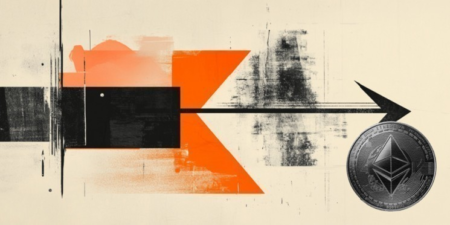- Ethereum’s Layer-2 networks face usability challenges, limiting accessibility for newcomers and complicating transactions across chains.
- Vitalik Buterin proposes standardized addresses, cross-chain swaps, and gas payments to improve Layer-2 usability on Ethereum.
- ERC-3668 (CCIP-read) and keystore wallets are in development to simplify cross-chain interactions and enhance Ethereum’s user experience.
Ethereum’s user experience across layer-2 (L2) networks is facing increased scrutiny as experts in the blockchain industry, including Camila Russo, highlight the significant challenges in navigating its multi-layered ecosystem. Russo recently expressed concerns on the social media platform X, noting that Ethereum’s L2 infrastructure, while potentially flexible, currently presents substantial obstacles to seamless user interactions, particularly across different chains.
Her observations have underscored the difficulties even experienced users face in transacting across Ethereum’s L2 networks. These concerns are not only relevant to veteran users but also raise questions about accessibility for newcomers to the Ethereum ecosystem.
Ethereum people I love you and I love Ethereum
But you gotta stop minimizing how bad the L2 experience is.
If you’re a crypto native, it’s bad. More than bad, it’s PAINFUL. That’s if you already use crypto. If you’re a newbie… it’s unacceptable. Simply unusable.
Using…
— Camila Russo (@CamiRusso) October 28, 2024
Complex L2 Interactions Raise Accessibility Issues
In addition, Russo emphasized the complexity involved in using multiple L2 networks on Ethereum for various decentralized applications (dApps), payments, and other transactions. She pointed out that Ethereum’s multi-chain structure, while innovative, lacks the cohesive usability features needed to streamline interactions for users.
Moreover, the L2 experience is especially challenging when users have to interact with different chains to complete simple transactions. This process, according to Russo, discourages broader adoption and deters businesses and individuals from integrating Ethereum-based solutions.
In response, the industry has recognized this multi-chain challenge, which has drawn a response from Ethereum co-founder Vitalik Buterin. He acknowledged Russo’s observations, agreeing that the current L2 user experience could be significantly improved. Buterin also outlined proposals aimed at enhancing cross-chain usability, especially to make Ethereum’s L2 ecosystem more approachable for both experienced and novice users.
Buterin’s Proposed Solutions for Seamless L2 Transactions
Specifically, Vitalik Buterin highlighted some key proposals to address the issues Russo raised, focusing on improving connectivity across Ethereum’s L2 networks. One central obstacle, Buterin noted, lies in the lack of standardized chain-specific addresses within Ethereum’s ecosystem.
To tackle this, he suggested incorporating the chain name directly in wallet addresses, which could allow smoother transactions across different chains by managing bridging operations automatically. This change could simplify the user experience, reducing the need for manual bridging and allowing users to enter a recipient’s address without concern for chain compatibility.
Additionally, Buterin proposed the use of standardized protocols for cross-chain swaps and gas payment options. By standardizing these processes, Ethereum could streamline trades across L2 networks, making transactions more straightforward for all users.
Furthermore, Buterin also mentioned the potential of using light clients, which would let users verify interactions across L2 networks, thereby enhancing security in Ethereum’s decentralized ecosystem. With these steps, Ethereum’s complex structure could become more manageable for both individual and enterprise-level users.
Future of Cross-Chain Usability on Ethereum
In the future, Ethereum developers have also been working on ERC-3668, known as CCIP-read, which aims to allow users to verify transactions across Ethereum-based ecosystems more effectively. This development promises to further simplify interactions across chains.
Additionally, Buterin suggested keystore wallets, which would permit updates on a single chain to be recognized across multiple chains. These changes could improve efficiency in the Ethereum ecosystem, potentially making it easier for users to transition between different chains without technical challenges.
Significantly, the potential impact of these solutions extends beyond just the user experience. With effective standardization, Ethereum’s ecosystem could become more accessible for developers, enterprises, and a growing user base.
Furthermore, Buterin defended the Ethereum Virtual Machine (EVM), stating that while improvements such as EVM-MAX and SIMD may enhance performance, the EVM remains effective without structural changes. This assurance aims to maintain confidence in Ethereum’s long-term stability while focusing on usability improvements.
Read the full article here









